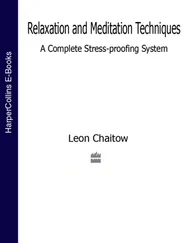Modern American adolescents compare themselves with their fellows, judging by such yardsticks as popularity, degree of influence over others, school and other results and their self-awareness of such concepts as honour and virtue. Out of those assessments comes a self-esteem judgement which can profoundly influence the person’s stress-coping abilities.
In adult life we use similar yardsticks, but we add to it factors such as how good we feel we have been at being parents, husbands or wives, as well as experiences of success and failure in many of life’s tasks and the world in general. One common tactic in maintaining self-esteem is the awarding to ourselves of the credit for all that goes well, and to others (or circumstances) the blame for all that goes wrong.
Additional reinforcement for feelings of self-esteem (and the opposite) derives from other people’s opinions of us, as we perceive them. To that we have to add the degree of respect, attention, approval, praise, affection and love (or the opposite of any of these) we receive. Our self-esteem, therefore, has a lot to do with how we see our value reflected in the eyes of those around us and of society, and this starts in childhood.
Freud summed it up by saying: ‘A man who has been the indisputable favourite of his mother keeps for life the feeling of a conqueror.’ Imagine also the opposite, the sense of rejection and failure which children derive and carry with them into adult life from a parental attitude of indifference, or worse. Of course, life is seldom as simple as any of these models suggest. Some children are much loved by their parents, but rejected by their peers (or the other way around); some people regard themselves as superior, having a high self-esteem, despite little evidence that anyone else agrees with them.
Is Self-Esteem Important Anyway?
It is known that poor self-esteem is linked to illness such as depression, anxiety states and a host of psychosomatic disorders. It has also been linked to delinquency, child abuse and prejudice. It is even suggested, with strong research evidence, that our measuring of self-esteem has echoes in biological evolution. Many animals have displayed what is called ‘resource holding potential’ (RHP). This relates to the animal’s sense of degree of ability to fight and defend itself when it compares itself with other animals. When a low RHP is assessed by an animal it actually alters its internal physiological state, characterized by excretion of higher levels of certain hormones, changes in skin colour and behaviour patterns which indicate submission rather than a desire to assert itself. This sort of behaviour is clear to anyone who has kept groups of animals in which some dominate and others seem willing to adopt submissive roles (the pecking order in a chicken run is a good example.)
In a human setting this means that hardiness, self-esteem, the ability to deal with life’s vicissitudes, could be linked to the primeval pattern noted in our animal example, and that we unconsciously take on the role of the weak and vulnerable based largely on our self-image, our degree or lack of self-esteem, and that this has profound implications in health terms. Unlike chickens, we are not legally permitted to assert ourselves by pecking and fighting, and we should look for other ways of raising self-esteem. This has to be one of the major challenges of stress-proofing. And, what is the ideal? To be healthy, it is suggested, you should be neither unmoved by success nor indifferent to it. You should also be using every means possible to increase awareness in yourself of these self-imposed limitations, so that you can blossom into the full potential which life offers, even with all its challenges and hardships.
But can self-esteem itself lead to excesses?
Cynicism
A danger inherent in excessively high self-esteem is seen in behaviour involving cynical mistrust. This is characterized by a collection of attitudes which involves suspicion and the denigration of the motives and behaviour of others, and this has been shown to be a risk factor in the development of coronary heart disease (A. Fontana et al, ‘Cynical mistrust and the search for self-worth’ Journal of Psychosomatic Research (1989), Vol. 33, No. 4, pages 449–56.)
Interestingly, this research also showed that such people who are prone to self-criticism if they fail to reach the high standards they set themselves, who score high in assessment of their own self-worth in social comparisons as well as displaying cynical mistrust of others, also scored high in assessment of their degree of dependency on others for validation that they were deserving of being loved.
Self-esteem can therefore be seen to be a two-edged sword, especially where these other elements are found (cynical mistrust and strongly self-critical tendencies). I will return to cynicism in later chapters, and will also examine a splendid psychotherapeutic tool (Voice Dialogue) which allows the therapist to help you become aware of the ‘sub-personalities’ which make up all of us, and which can be involved in these excesses of critical and self-critical behaviour.
In summary: self-esteem, in its healthiest expressions, is a major stress-proofing factor, and conversely excessive self-esteem, especially when linked with cynicism, is a stress factor in its own right, as is low self-esteem.
Basic Emotions
The range of possible stress factors is almost endless, and the possible permutations of reaction to them equally so. It has been said that there are only two basic emotions: ‘like’ and ‘dislike’. All other emotions stem from variations and degrees of these prime feelings. The amazing differences in people, tastes, likes, dislikes and so on, makes it obvious that there is seldom any intrinsic quality in an event, object or situation, which guarantees it being universally liked or disliked (one man’s meat is patently another man’s poison). It is also worth noting that at different stages in life and under different conditions, the same person’s ‘likes’ and ‘dislikes’ will vary.
The conclusion may be drawn that a person can possibly be taught to like what was previously disliked, and vice versa. Thus, if, because of degrees of ‘liking’ or ‘disliking’, a person’s behaviour gives rise to a more stressful existence and more problematic relationships than are desirable, reduction of stress is possible only through a basic change in attitudes.
Just as type A must change from a fast-moving, fast-talking, fast-acting, fast-eating individual to one with more deliberate habits, so must the individual who says ‘that’s how I am, I can’t change!’ be made to understand that change is not only possible but desirable, and that self-interest dictates that it should be so. Changing habits and attitudes is merely a matter of understanding and recognizing them for what they are, followed by modifications in behaviour. This is easily said and, obviously, not as easily achieved. However, as will become clear, the alternatives to such behavioural modification may often be serious illness.
The Importance of Changing Your Automatic Response
In setting about behavioural modification – the changing of habitual attitudes and ways of responding – it is important to be aware that whenever you behave in a particular manner, you reinforce the belief that lies behind that form of behaviour. If there is always an angry tantrum in response to real or imagined criticism, then your belief that this is the appropriate response will be reinforced with each outburst.
To alter the underlying belief calls for an altered response. By substituting a less stressful, less provocative reaction, the belief will develop, and be reinforced, that the new reaction is correct and appropriate. Obviously, in interpersonal relationships, two such modified responses may be needed, and this is not easy to arrange.
Читать дальше












